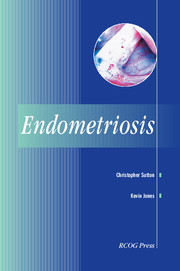Chapter 1 - Epidemiology and aetiology
Published online by Cambridge University Press: 05 February 2014
Summary
Epidemiology
Endometriosis is one of the most common benign conditions found among gynaecological patients. Various estimates suggest that 6-44% of women of a reproductive age have endometriosis. However, as the accurate diagnosis of this condition depends upon laparoscopic examination, the prevalence of endometriosis in the general population is unknown. The variable appearance of endometriotic lesions at laparoscopy and the ability of gynaecologists to recognise these lesions also affect the reported incidence and prevalence. Furthermore, the prevalence of endometriosis varies depending upon the type of hospital-based population investigated. Table 1.1 shows the prevalence data of specific patient groups. It is most commonly found in patients undergoing investgations for infertility and chronic abdominal pain. Prevalence is known to vary according to geography and race, with high levels recorded amongst Japanese women. The incidence of this condition is believed to be higher among first-degree relatives of patients.
Table 1.1 clearly demonstrates a wide variation in the reported prevalence of endometriosis, often reflecting investigators' biases at the time the studies were undertaken. There are many potential confounding variables when comparing different national and ethnic groups, including availability of health care, access to contraception, cultural patterns of childbearing and the attitude toward menses. Bias can also occur when patients are selected according to their symptoms at presentation. Thus, prevalence will vary depending upon whether pelvic pain in general, or a specific symptom such as dyspareunia or dysmenorrhoea, is used to select patients.
- Type
- Chapter
- Information
- Endometriosis , pp. 1 - 8Publisher: Cambridge University PressPrint publication year: 2004



